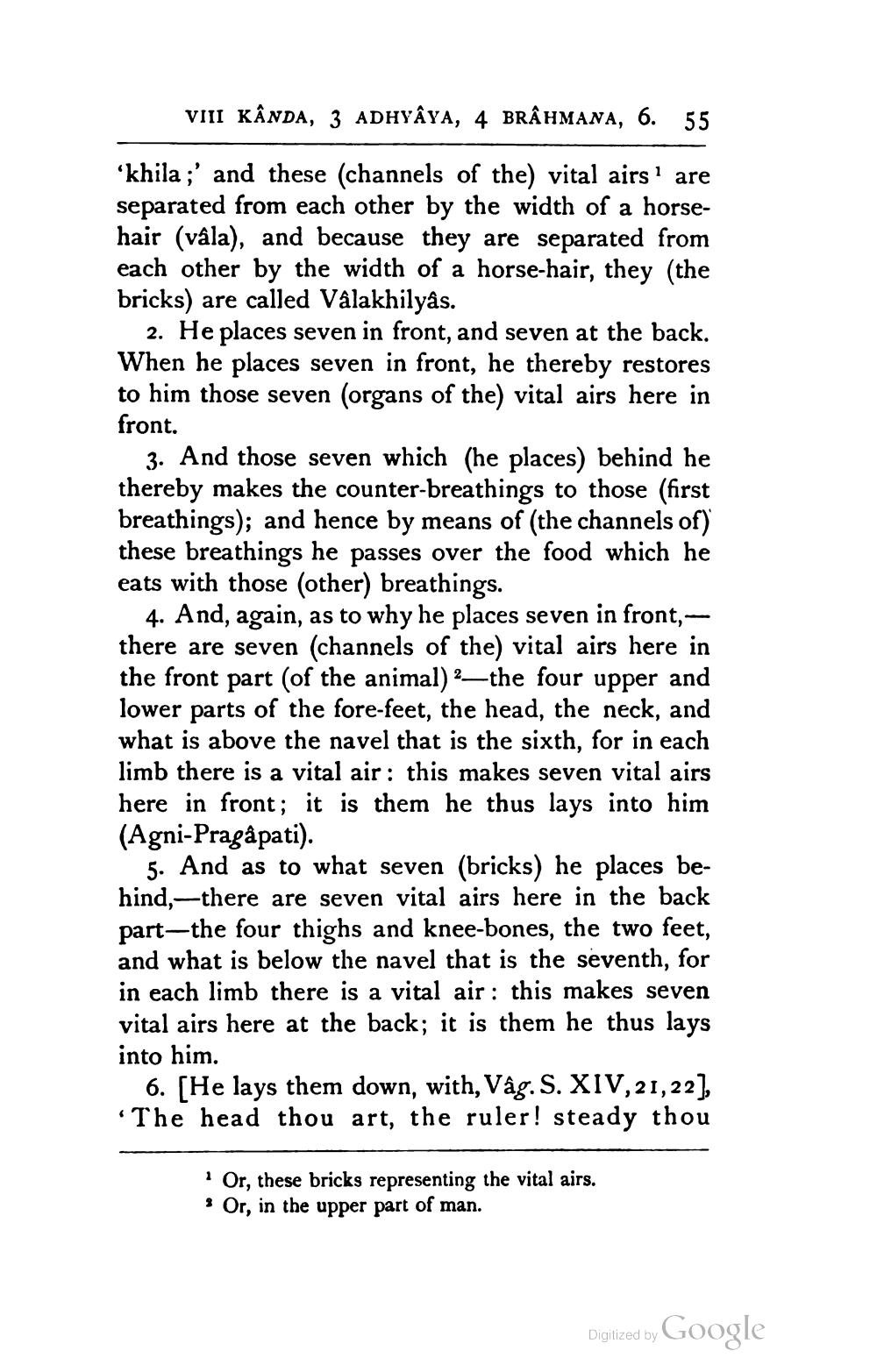________________
VIII KÂNDA, 3 ADHYAYA, 4 BRÂHMANA, 6. 55
‘khila ;' and these (channels of the) vital airs' are separated from each other by the width of a horsehair (våla), and because they are separated from each other by the width of a horse-hair, they (the bricks) are called Valakhilyâs.
2. He places seven in front, and seven at the back. When he places seven in front, he thereby restores to him those seven (organs of the) vital airs here in front.
3. And those seven which (he places) behind he thereby makes the counter-breathings to those (first breathings); and hence by means of (the channels of) these breathings he passes over the food which he eats with those (other) breathings.
4. And, again, as to why he places seven in front, - there are seven (channels of the) vital airs here in the front part (of the animal) 2—the four upper and lower parts of the fore-feet, the head, the neck, and what is above the navel that is the sixth, for in each limb there is a vital air: this makes seven vital airs here in front; it is them he thus lays into him (Agni-Pragåpati).
5. And as to what seven (bricks) he places behind,—there are seven vital airs here in the back part-the four thighs and knee-bones, the two feet, and what is below the navel that is the seventh, for in each limb there is a vital air: this makes seven vital airs here at the back; it is them he thus lays into him.
6. [He lays them down, with, Vâg. S. XIV,21,22), 'The head thou art, the ruler! steady thou
Or, these bricks representing the vital airs. : Or, in the upper part of man.
Digilized by Google




